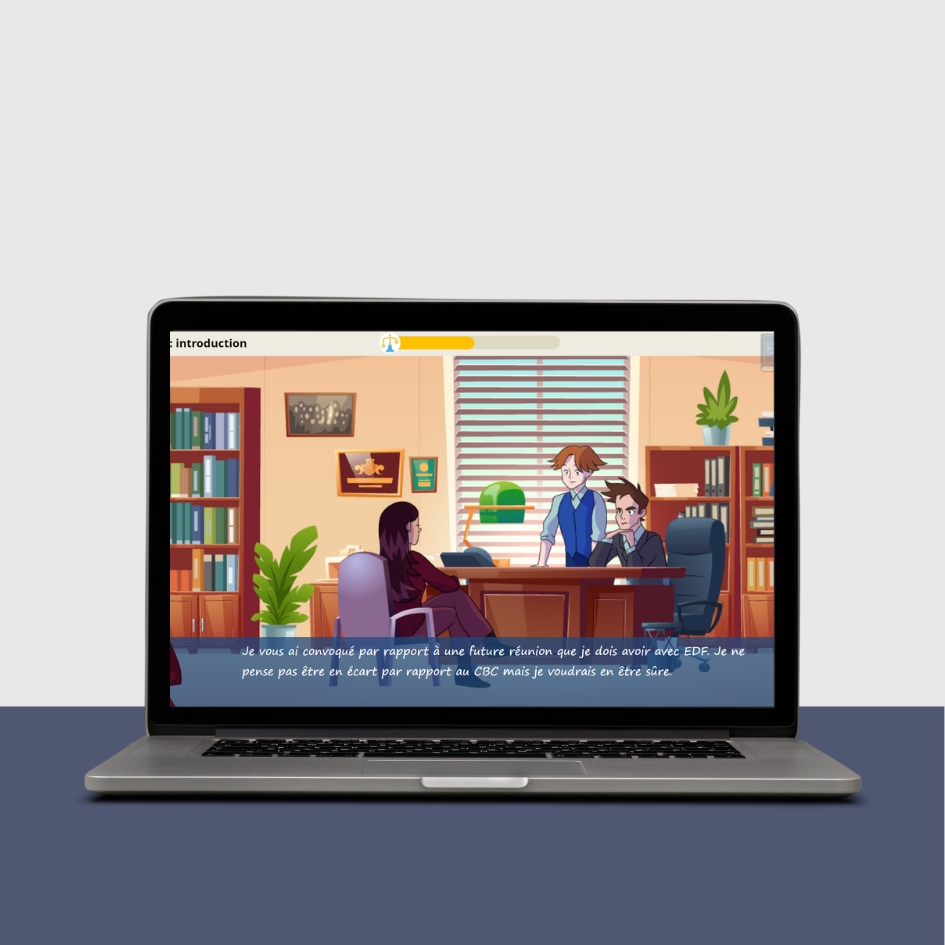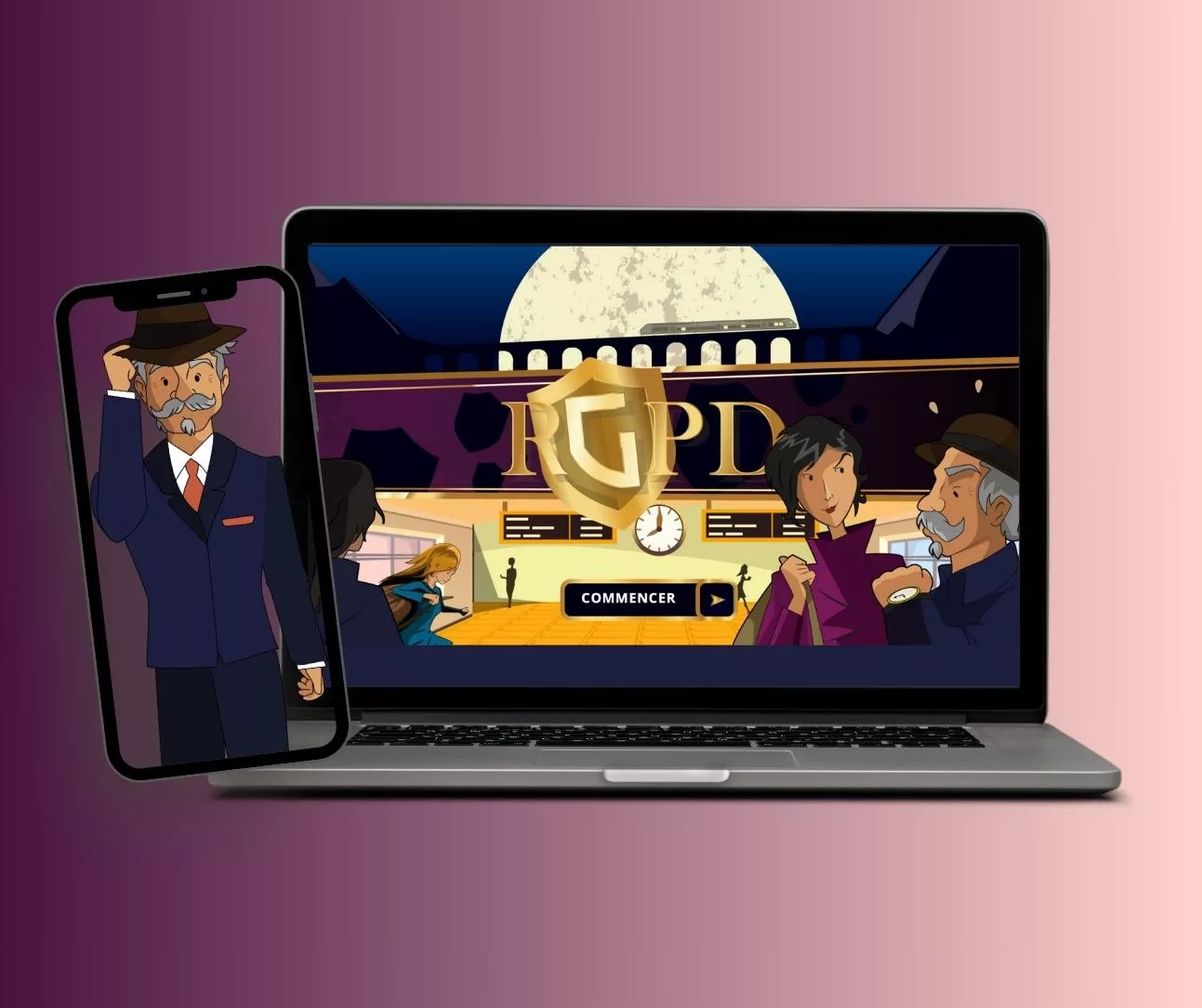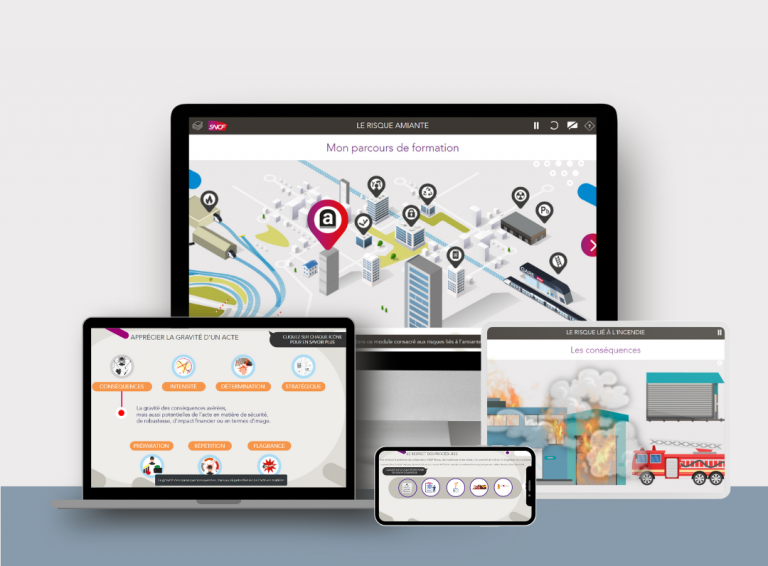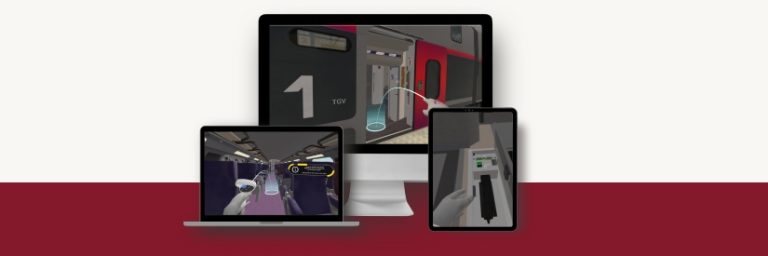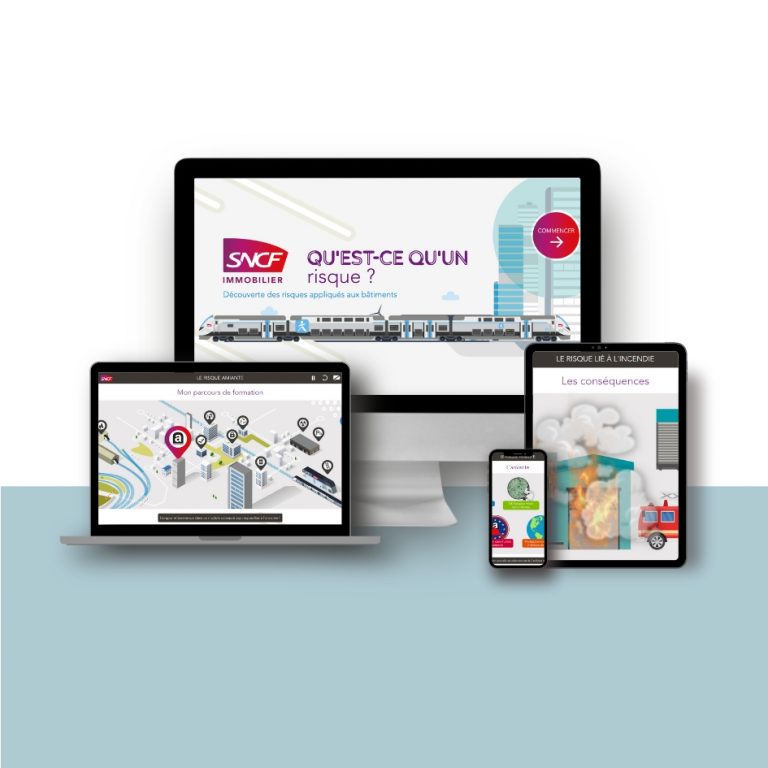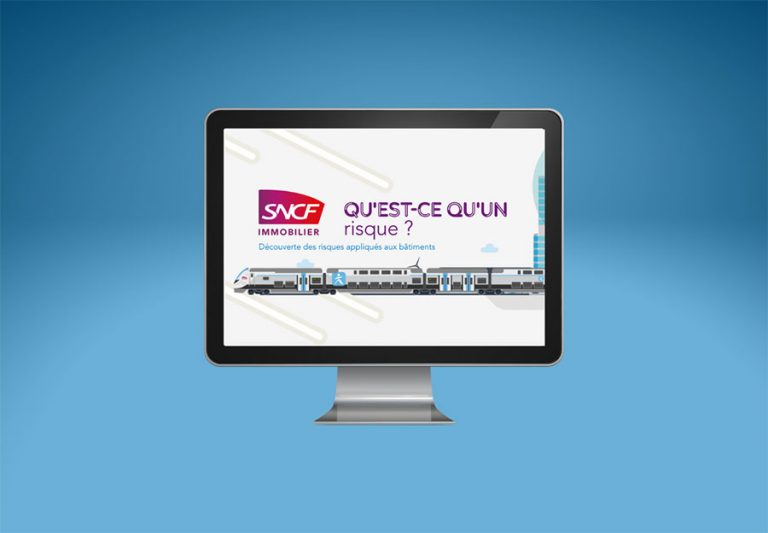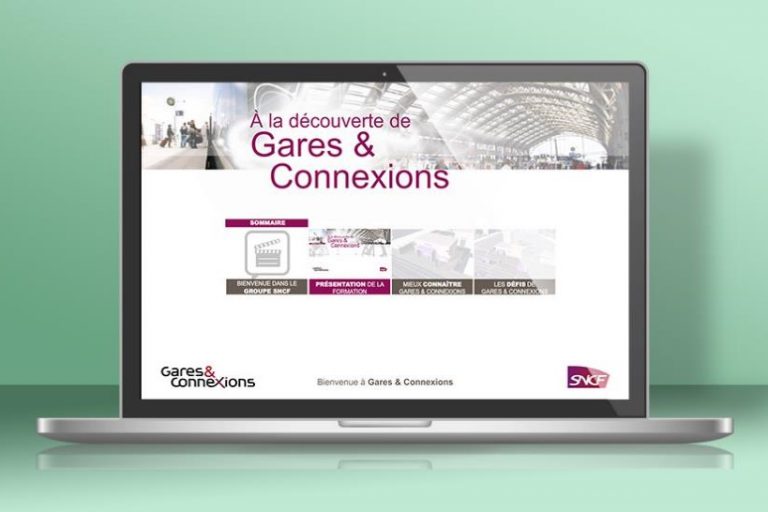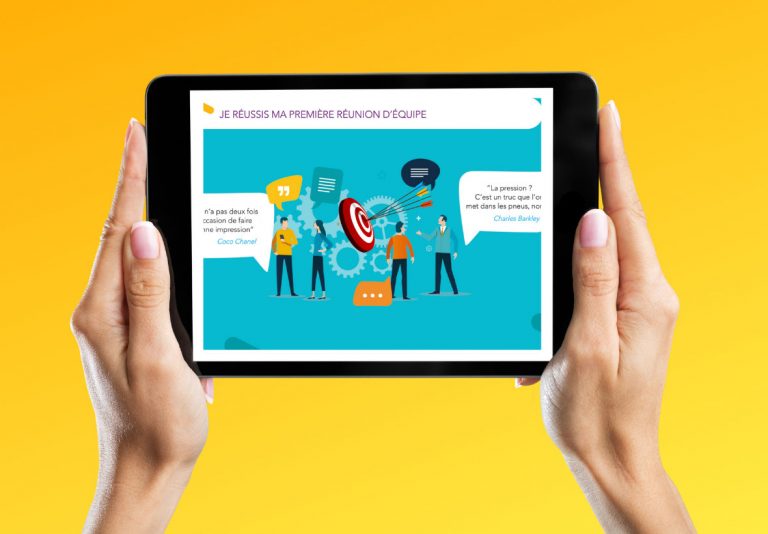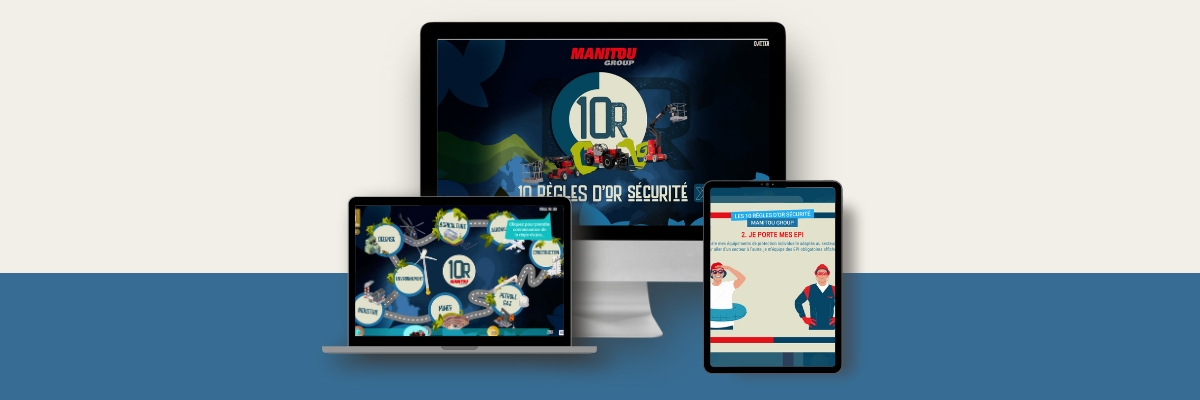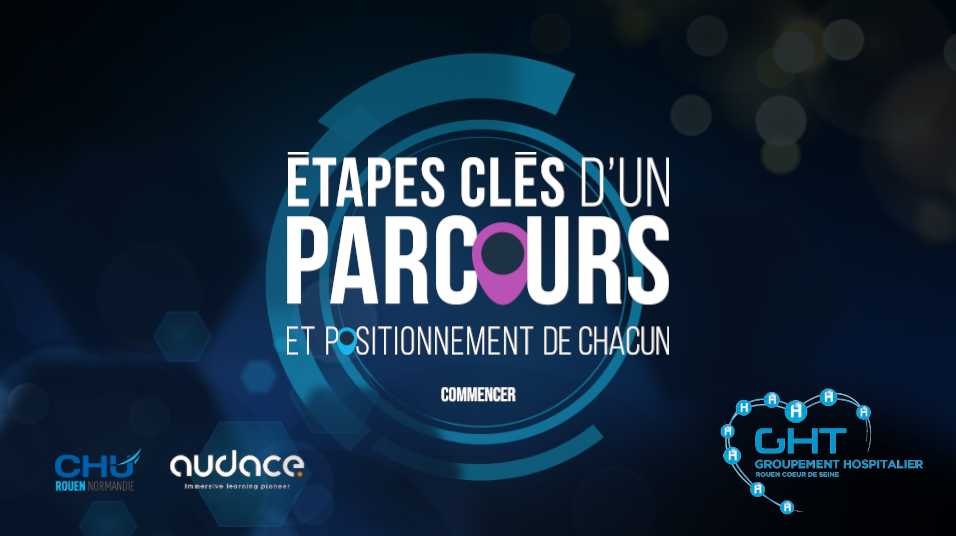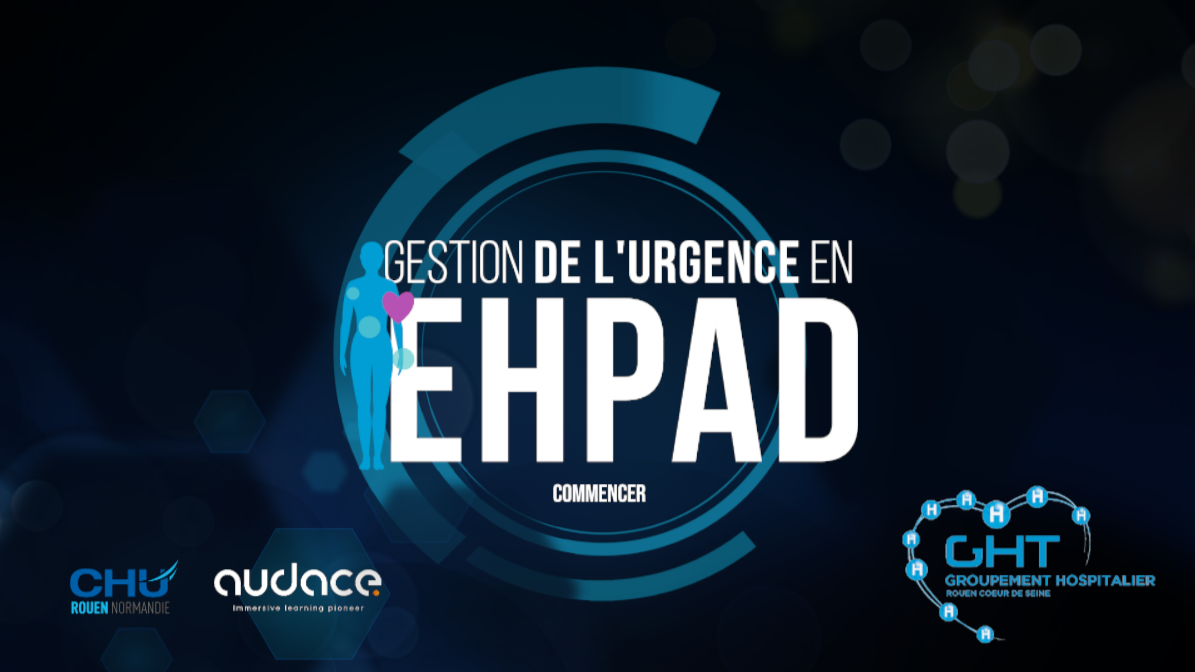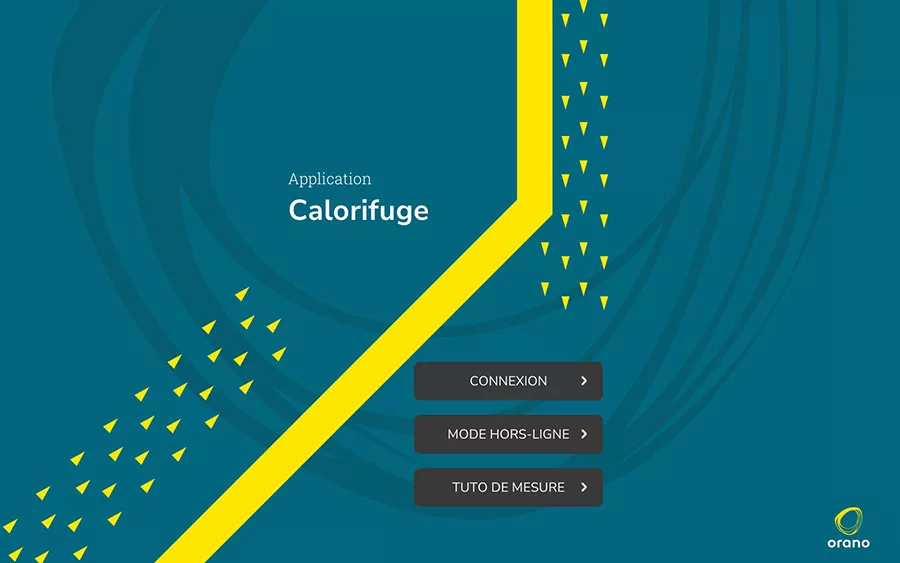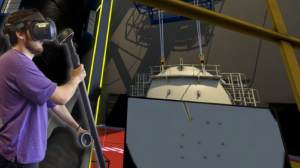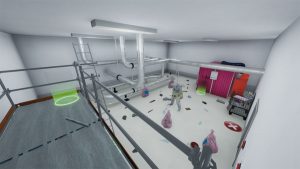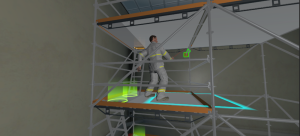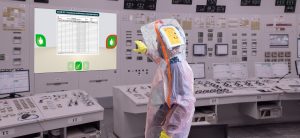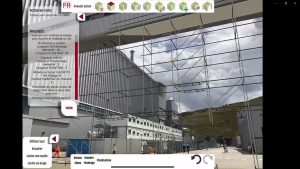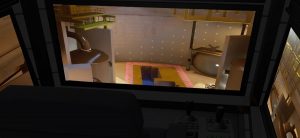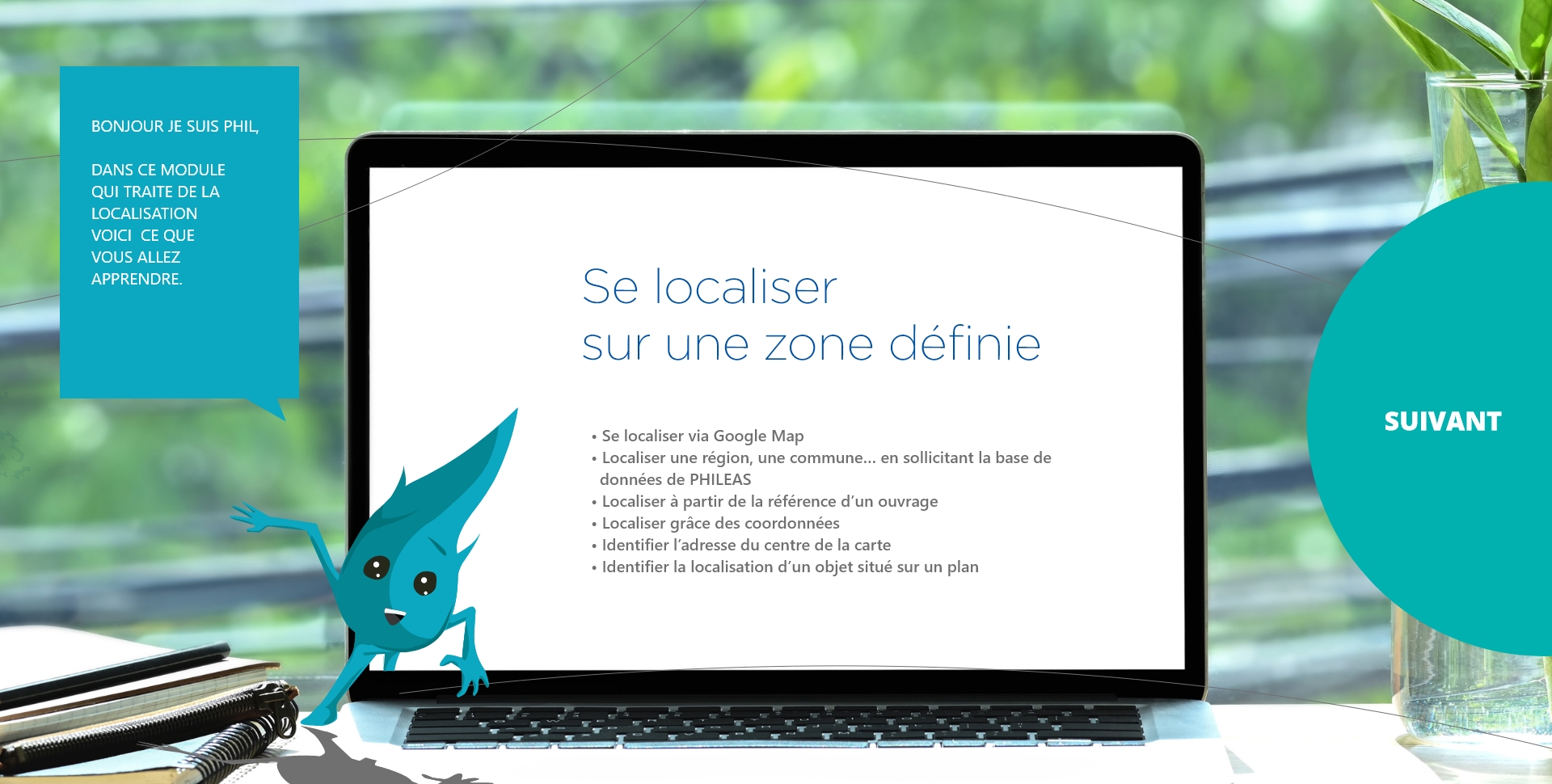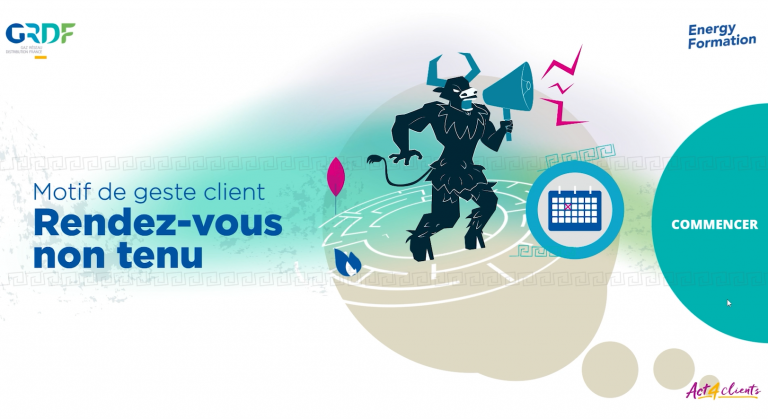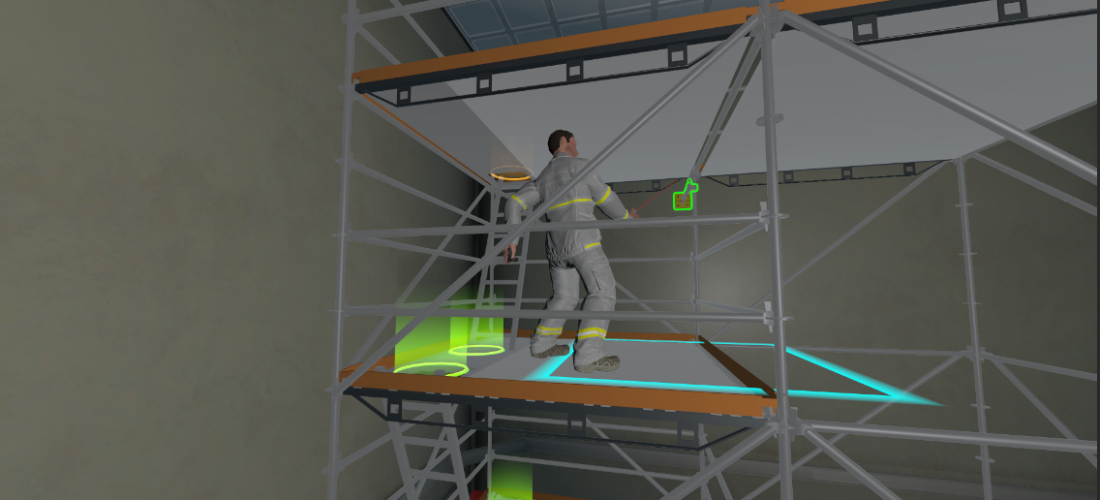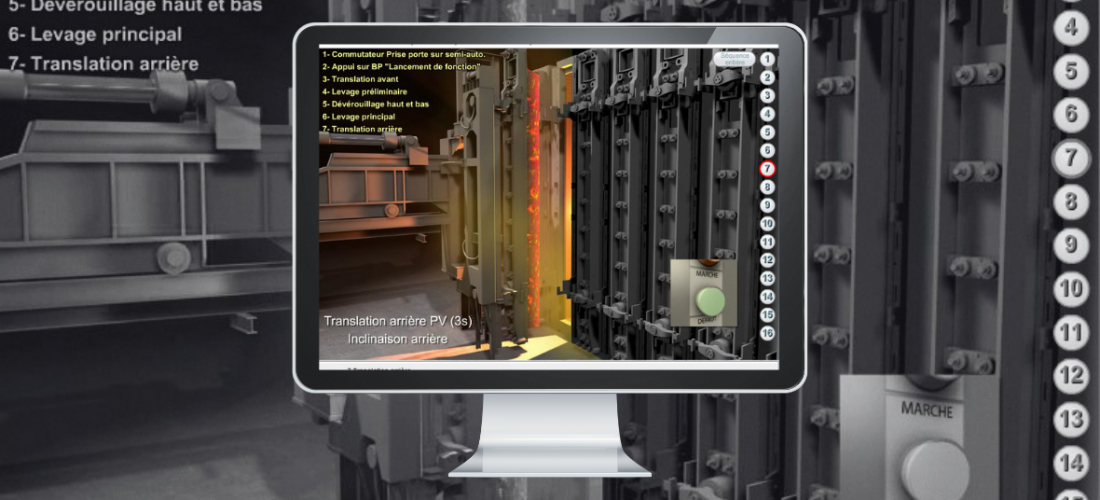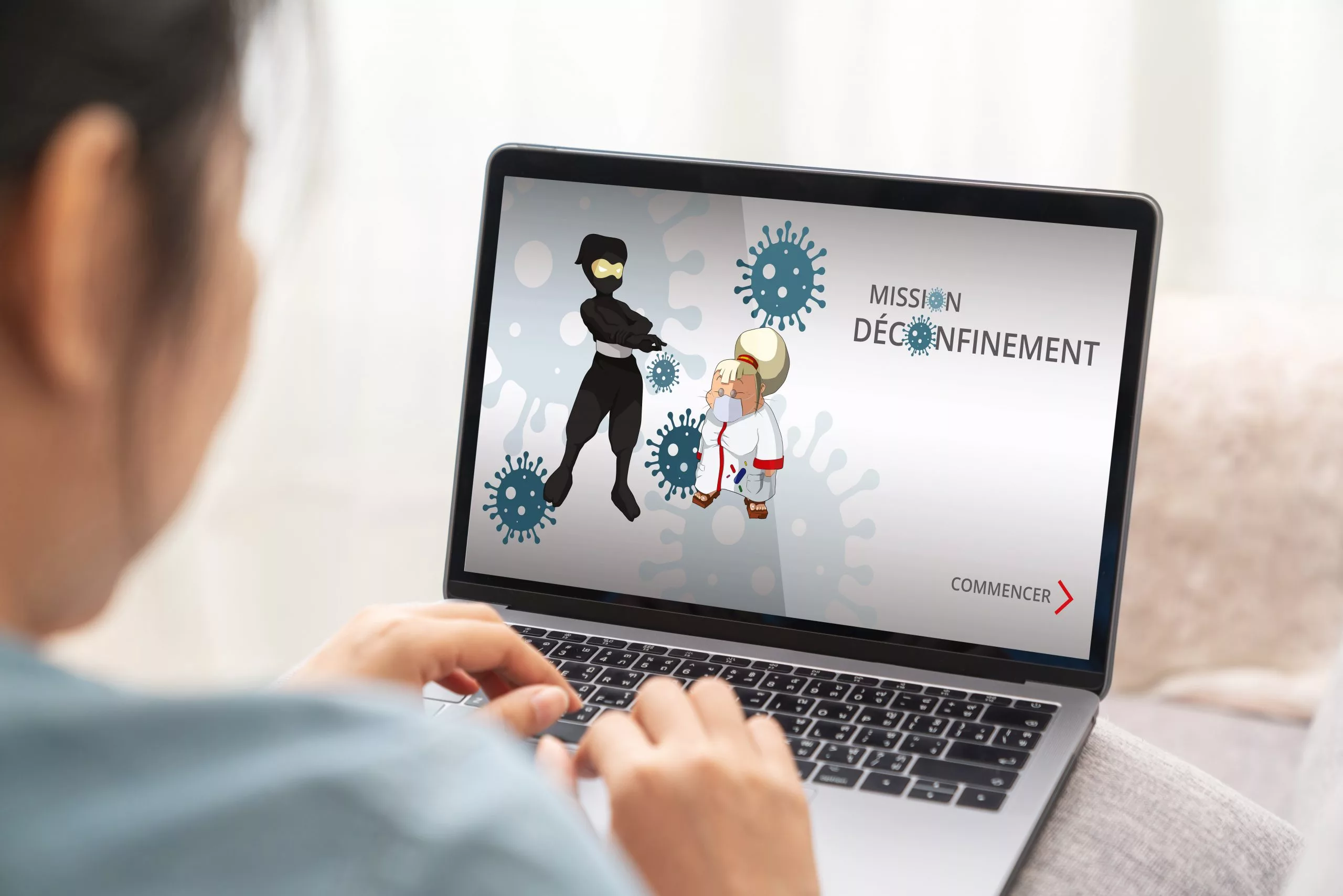During the year 2022, RTE aimed to strengthen the training of its teams on psychosocial risks (PSR) and the codes of conduct established within the company. The electricity network manager has chosen to address these subjects via two gamified elearning modules which he has entrusted to Audace to produce. On this occasion, our teams did not hesitate to push the limits of Storyline to offer an original educational journey!
Device
The e-learning PSR offers an innovative approach to raise employee awareness about psychosocial risks. Through comic strip-style scenarios, learners are immersed in stories that help them understand and retain key points related to PSR. In this setup, learners are at the heart of an imaginary trial, taking on the role of the defense lawyer. They face other courtroom actors, such as the prosecutor and the judge, while studying the company’s code of conduct rules.
Pitch : Would you be able to argue before a ruthless court regarding good conduct? Could you be a true hero in the field of psychosocial risks? And what if the key was in your hands? Answer in these new generation comics!
Digital training content
The training covers various aspects related to psychosocial risks, such as anxiety, harassment, and addictive behaviors. It includes 6 modules. Through staged examples, learners discover in a playful way the risks and the behaviors to adopt to prevent them. Immersed in an original scenario, learners are active participants in their own learning.
The training is aimed at all employees and managers of RTE, including interns and apprentices. Learners come from diverse backgrounds. They need to understand the rules of conduct and act accordingly.
Finally, the learner can complete a formative assessment at the end of the training. Based on the results, recommendations are made to review certain parts of the training. Additionally, the system complies with the WCAG Level A accessibility standard for hearing impairments.
Technical solutions
The system uses a graphic style inspired by the manga universe, providing a unique visual identity to the training modules. The 2D illustrations, dialogue bubbles, and overall narration create an experience that generates positive emotions for the learners.
Pedagogical objectives
- Explain the concept of psychosocial risks
- Identify psychosocial risks and their consequences
- List the types of psychosocial risks and identify their causes
- Detect and explain the consequences of psychosocial risks on employees and learn how to respond to them.
- Explain the levels of prevention for psychosocial risks.
- Identify the stakeholders and mechanisms for addressing psychosocial risks.
Pedagogy
The training adopts the “choose-your-own-adventure” book model. Learners progress through the training based on the choices they make, creating an interactive and personalized experience. Game mechanics include the use of a bonus-malus gauge based on the learner’s choices, which influences their user experience. This innovative approach enhances engagement and knowledge retention.
